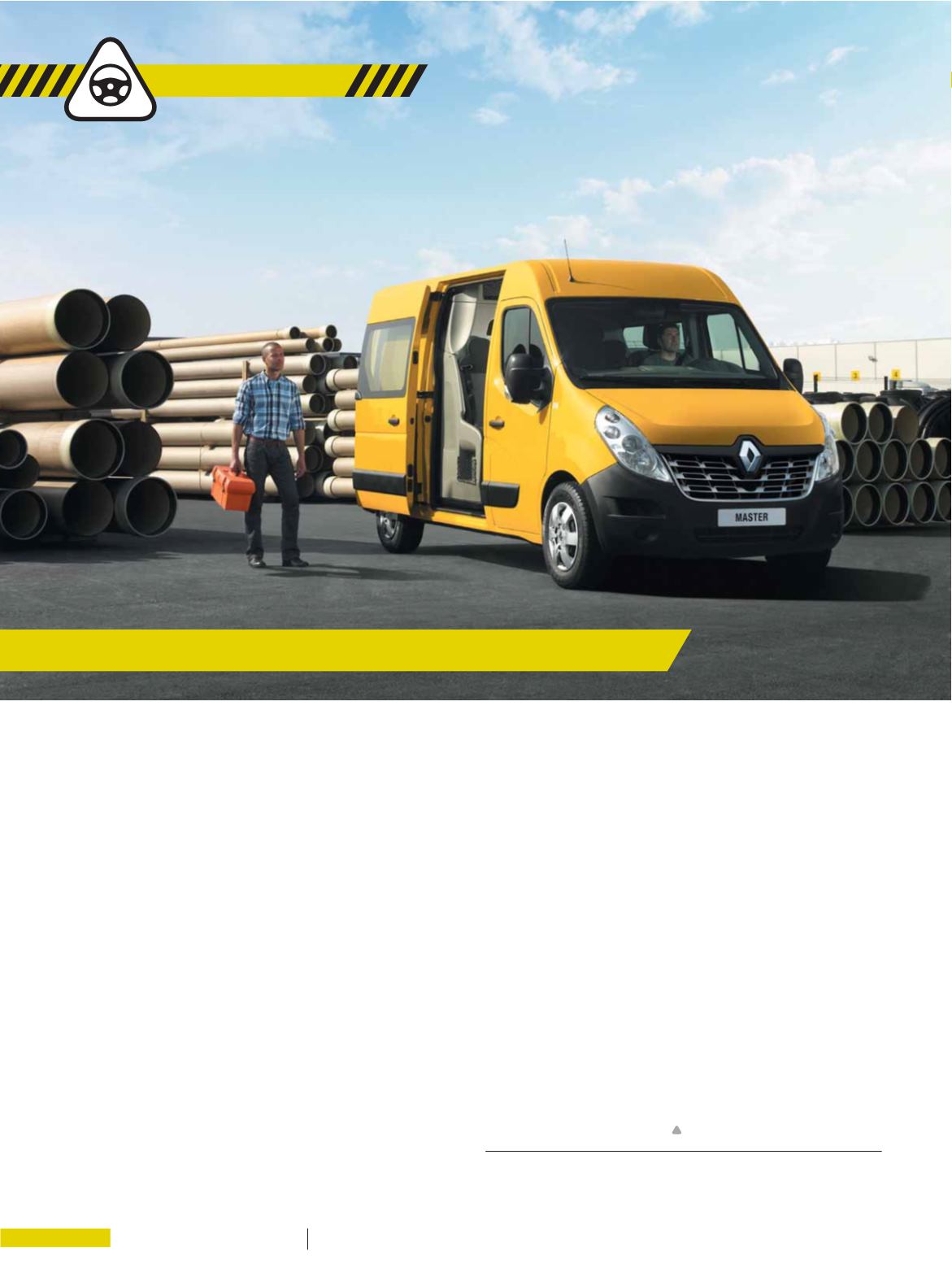

1 0 0
E L E C T R I C A L CO N N E C T I O N
W I N T E R 2 0 15
TRANSPORT
with Terry Martin
R
enault Australia has introduced a heavily upgraded
Master large van series, easily identified by its striking
new looks and now loaded up with an advanced twin-
turbo diesel engine and a higher level of standard equipment.
The latter includes fuel-saving automatic engine idle-stop
on models with a manual transmission and a new-generation
electronic stability control system, which is fitted standard
across the range and incorporates hill-start assist, trailer
swing assist and Renault’s ‘Grip Xtend’ software (for enhanced
traction on soft ground).
Another addition with the so-called New Brand Identity (NBI)
Master series is a wide-view mirror in the passenger sun visor
that reduces the left-hand blind spot and improves rearward
visibility, adding to a list of beneficial equipment that already
includes dual front airbags, ABS brakes with electronic brake-
force distribution, double-optic headlights, cruise control
(with speed limiter) and remote central locking with automatic
locking above 30km/h.
‘Pro’ and ‘Premium’ option packages have also had high-
grade equipment added with the latest series.
New combinations among the van, cab chassis and platform
cab body styles swell the Master model range to 20 variants at
last count, including a new long-wheelbase (LWB) rear-wheel-
drive mid-roof van (with GVM of 4.5t and payload out to 2,207kg),
a LWB front-wheel-drive (FWB) mid-roof window van and a LWB
FWD platform cab suitable for body builders and converters.
For models with a manual gearbox, an advanced 2.3L ‘M9T
Energy dCi’ four-cylinder twin-turbocharged engine family
replaces the single-turbo M9T unit powering all current-
generation Master van and cab chassis models since 2012.
With the first turbo delivering strong pulling power at low
revs and the second kicking in at higher engine speeds, the
new diesel donk comes in two states of tune: 120kW of power
at 3,500rpm and 360Nm of torque from 1,500rpm for all (six-
speed) manual variants bar the entry-level short-wheelbase
FWD low-roof van, which has a slightly lower output of
100kW/340Nm.
Combined with Renault’s ‘Stop & Start’ idle-stop system, the
twin-turbo engines can deliver combined-cycle fuel economy
as low as 6.9L/100km and CO
2
emissions of 180g/km. These
are European-sourced figures based on the panel van and are
said to be class-leading.
A regenerative braking system dubbed ‘Energy Smart
Management’ is also now onboard with the bi-turbo diesel
variants, helping charge the battery whenever the vehicle is
decelerating.
Master variants paired with the optional QuickShift six-speed
automated manual transmission stick with the single-turbo
M9T good for 110kW/350Nm.
Renault Australia
www.renault.com.auRENAULT MASTER
















